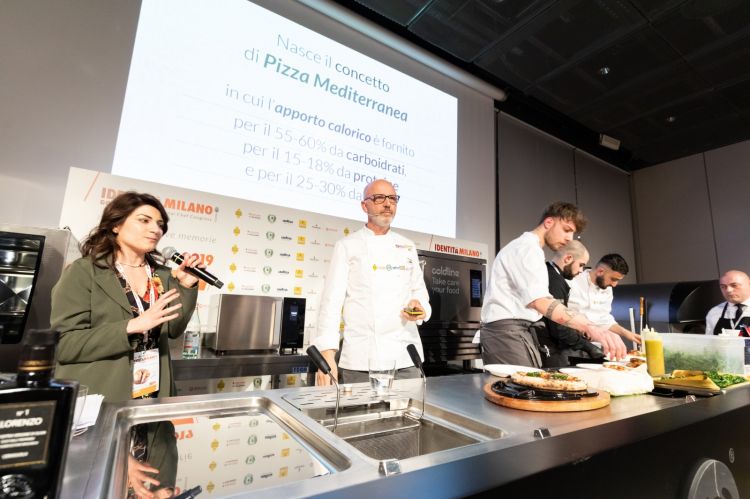Some stories have unexpected developments, though they are the result of intense and constant work. It’s the case of Franco Pepe, from the slight bewilderment of the first edition of Identità di Pizza, in 2011, to the – always sincere, but more aware – emotions of this year, with all that happened in between.
At the time, he arrived on stage with his wood kitchen chest. Franco had been working for years as pizzaiolo in the family restaurant in Caiazzo and Pepe in Grani was still in an embryo stage. Today, he’s acknowledged as one of the best pizzaioli in the world and has built a project that goes beyond pizza, or rather he investigates every aspect of pizza – from nutrients to every feature of the hospitality offered in the pizzeria – in a constantly evolving research.
On the stage of the 15th edition of the congress,
Franco Pepe brings – in words and with a concrete sample – an idea that he wants to share with the audience, so that perhaps someday it can become a “standard”, a new shared memory, something that has already happened to his
Margherita Sbagliata which has been reinterpreted by pizzaioli all around the world.

With nutritionist Michelina Petrazzuoli
He continues to research a “functional pizza”, with a balance between carbohydrates, proteins and lipids (respectively 55-60%, 15-18% and 25-30%). It follows the guidelines given by the Mediterranean Diet, with the support of nutritionist
Michelina Petrazzuoli. Hence
Pepe presents – for those who are interested, or need it – a concept of
Pizza Mediterranea that erases the status of “exception to the rules” that one often associates to a dish that is too good to be healthy.
To do so, he bases his work on the excellent
Marinara Ritrovata, which is born from the right critical approach in analysing tradition to foster innovation. In other words: the dough is reduced from 250 to 200 g, seasoned with two types of tomatoes that are particularly rich in lycopene (San Marzano DOP and Piennolo tomatoes from Vesuvius), anchovies from Cetara (a source of Omega3) to add proteins and balance the nutrients, just like his father used to do, when he also added olives and capers.
By working as if he were in a kitchen, instead of a pizzeria, by sharing ideas with many chefs, he decided to add the crispy capers after the baking, so as to preserve a crispy texture without “contaminating” the tomato, and without adding salt. Finally, there’s the extra virgin olive oil with garlic, the oil absorbing the precious allicin, and basil, fried so as to solidify its chlorophyll, so that it preserves its bright green colour.
With fibres still missing, here comes the extra-dish based on wild herbs – in this case raw chicory – seasoned with Pepe Dressing. Inspired by the classic French Dressing, it’s made with extra virgin olive oil and chopped pumpkin seeds, no extra salt, and it has another function too: served in a special plate next to the pizza and the salad, it can be used as a dip for the cornicione, the edge of the pizza – which for some is the best part of the pizza, while many others leave it on the plate – and therefore it also helps to avoid waste.
Translated into English by Slawka G. Scarso